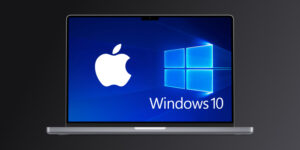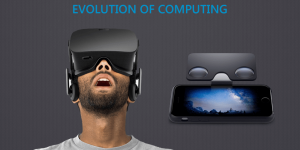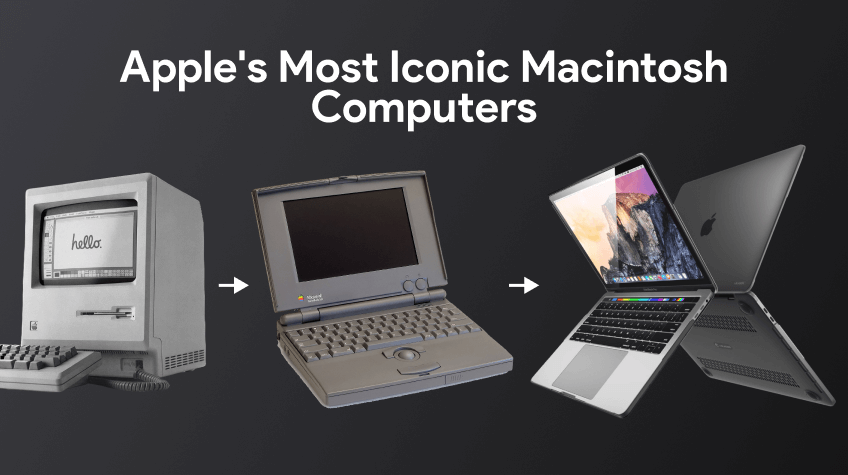
Apple Mac, formerly known as Macintosh, has reached a significant milestone by completing it’s 40 anniversary of its existence in the market. Undoubtedly, the tech giant has established a significant place in the industry with its magnificent product range, which includes some of the most iconic computers. Apple has contributed significantly by keeping up with ever-changing technological advancements.
It was in the year 1984 when Apple launched its first ever Macintosh, now known as Mac. The Macintosh revolutionized the world and convinced people that computers were within reach for everyone.
Throughout its history, the Mac has gone through various technological shifts, from the Motorola era to the Intel transition and now the introduction of Apple Silicon. Yet, it has remained a steadfast presence in the ever-evolving world of computing.
Apple’s Mac has undergone significant development and advancement over the last four decades. This device is now celebrating a significant milestone. Recently, the Apple Macintosh celebrated its 40th anniversary.
That’s when we decided to shed light on some of the iconic Mac computers that Apple has launched so far to commemorate Apple Mac’s successful journey.
Take a look…
Table of Contents
21 Most Iconic Macintosh Computers By Apple Over The Four Decades
Apple’s Mac has undergone significant changes over the past four decades. And there is no doubt that Apple’s Mac is one of the most successful products so far. Here is the list of the 21 most iconic Macintosh computers that Apple has released over the past four decades till Apple 40th anniversary, along with their features and year of launch:
1. Macintosh 128K
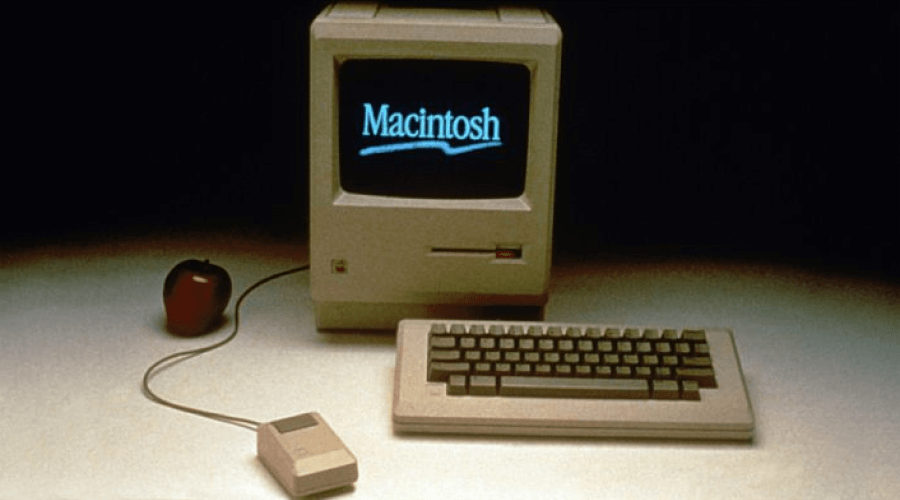
The Macintosh 128K was the pioneering Macintosh computer. It made its debut on January 24, 1984. Every single Macintosh 128K computer sold during that period had the autographs of the entire team responsible for its creation, including Steve Jobs and Steve Wozniak. The autographs etched into the plastic case added a unique touch. In addition, this was the first-ever computer that introduced the world to a graphical user interface. It stood out from its competitors by being the first mass-produced PC to incorporate a user-friendly graphical user interface (GUI) and a mouse.
Key Features of Macintosh 128K:
Release Date: January 24, 1984
- Macintosh 128K featured a 9-inch monochrome display
- 128 KB of RAM
- a .5-inch floppy drive
- A mouse-controlled graphical user interface (GUI).
2. Macintosh 512K
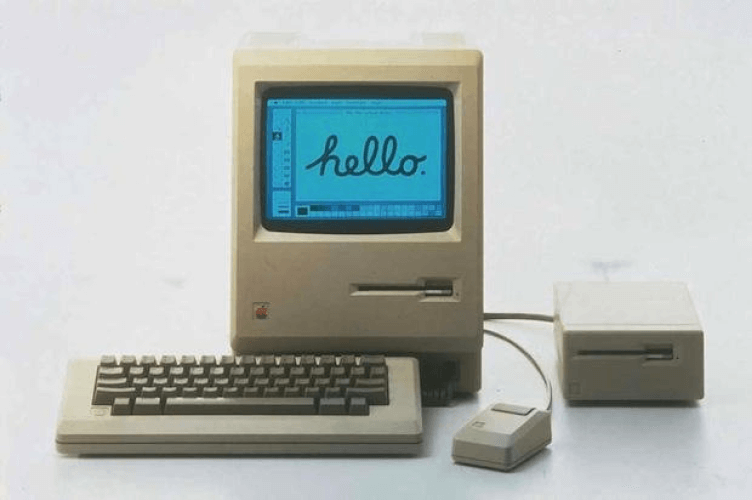
After the launch of the first personal computer, the Macintosh 128K, in the year 1984, Apple launched the Macintosh 512K just eight months later on September 10, 1984. The Macintosh 512K was a game-changing product. It was designed to help users have an enhanced experience with personal computers. The product was user-friendly and accessible to individuals with varying levels of expertise, leading to its widespread adoption among both personal and professional users.
Key Features of Macintosh 512K:
Release Date: September 10, 1984
- The Macintosh 512K came with a significant amount of memory, that is, 128K of RAM
- The Macintosh 512K was the pioneering personal computer that included a mouse as a standard feature
- The Macintosh 512K came equipped with a convenient built-in 3.5-inch floppy disc drive
- This device was compact with dimensions of 13.5 inches width, 9.5 inches depth, and 2.5 inches height
3. Macintosh XL
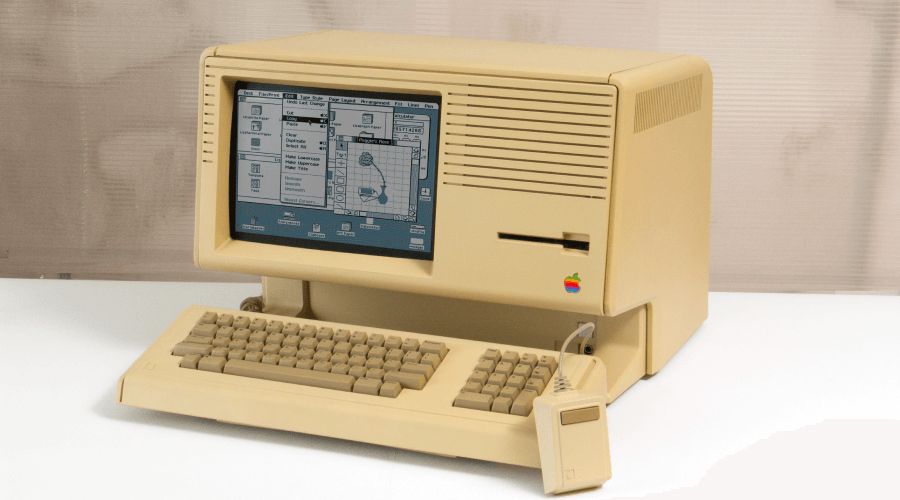
The Macintosh XL was released on January 1, 1985. This device was a modified version of the Apple Lisa personal computer. The Macintosh XL configuration included MacWorks XL, a Lisa programme that enabled 64 K Macintosh ROM emulation. This personal computer was launched as the successor of the original Macintosh. It boasted several enhancements, such as a faster processor, increased memory, and a larger screen. This was the first-ever Macintosh computer that had a hard disc drive as an option. The Macintosh XL did not achieve commercial success and was discontinued in 1985.
Key Features of Macintosh XL:
Release Date: January 1, 1985
- The Macintosh XL featured a 400K 3.5″ floppy drive and an internal 10 MB proprietary “Widget” hard drive
- It came with the option to add a 5 or 10-MB external ProFile hard drive with the parallel interface card
- The machine came equipped with a Motorola 68000 CPU running at a clock speed of 5 MHz, accompanied by 512 KB of RAM
4. Macintosh Plus
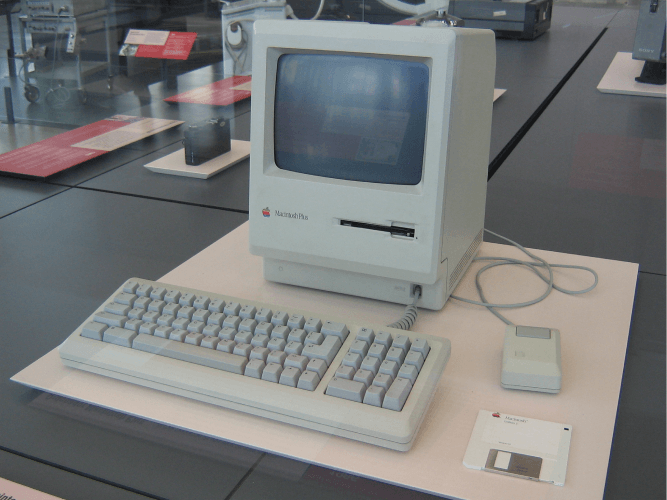
Macintosh Plus is yet another iconic personal computer on January 16, 1986. This device was specifically designed for professional users. The Macintosh Plus boasted a range of enhancements compared to its predecessor. These enhancements included a speedier 8 MHz 68000 processor, a SCSI port for seamless connection to external hard drives and peripherals, and a convenient built-in ADB (Apple Desktop Bus) port for effortless mouse and keyboard connectivity. Also, it had expanded 128 KB of ROM, enabling it to support a wider range of software.
Key Features of Macintosh Plus:
Release Date: January 16, 1986
- The Macintosh Plus featured an expanded 128 KB of ROM
- It boasted an increased 512 KB of RAM
- It included a new desktop interface called “Finder,” which enhanced file organization and accessibility
- It came equipped with applications like MacWrite, a word processor, MacPaint, and a drawing programme
5. Macintosh SE
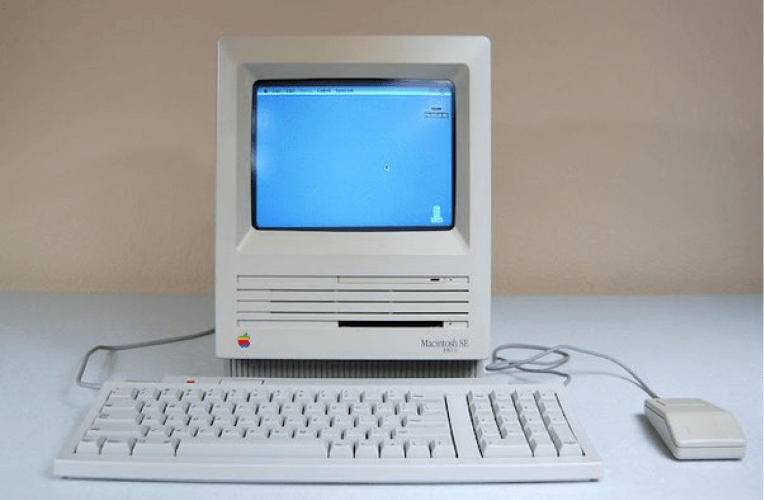
Apple released the Macintosh SE on February 3, 1987. Apple Computer, Inc. created this personal computer to replace the original Macintosh and Macintosh Plus. The Macintosh SE was widely adopted for both personal and business purposes. It gained immense popularity in educational settings, specifically in schools, for teaching students about computing.
Key Feature of Macintosh SE:
Release Date: February 3, 1987
- It boasted a 9-inch monochrome display, a 400K floppy disc drive, and a 20MB hard disc drive.
- In addition, the device boasted a Motorola 68000 processor operating at 8 MHz, along with 1 MB of RAM.
- Moreover, the Macintosh SE was the first Macintosh to include a SCSI port. SCSI port enabled users to connect to external devices like hard drives, printers, and scanners.
6. Macintosh II
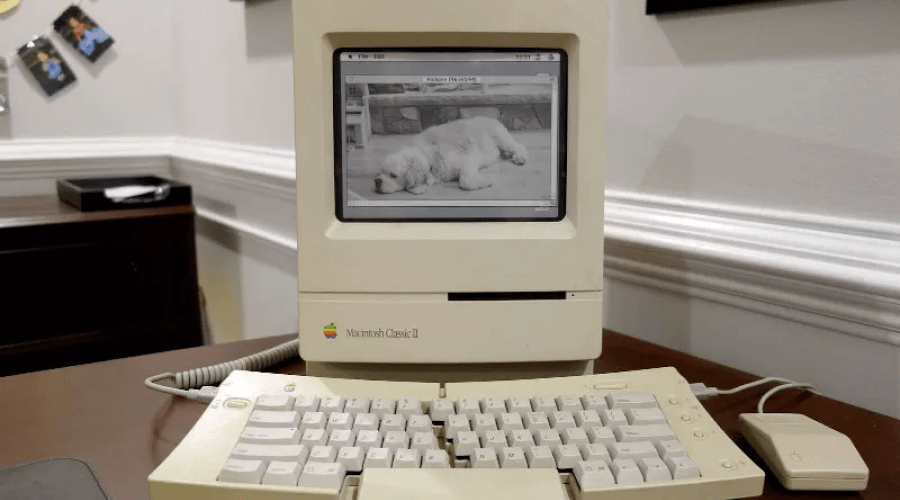
The Macintosh II, which was released on March 2, 1987, marked a major turning point in the history of personal computing. This was the first-ever Macintosh to include a color display. This device was specifically designed for designers and professionals to enjoy vibrant graphics and improved visual capabilities. The Macintosh II made tasks like graphic designing, desktop publishing, and multimedia creation a breeze for users. In addition, the Macintosh II had a modular design that allowed users to enhance its capabilities by incorporating extra circuit boards and peripherals.
Key Features of the Macintosh II:
Release Date: March 2, 1987
- The Macintosh II came equipped with a Motorola 68020 microprocessor
- It had a color display that distinguished it from its earlier models.
- It featured a resolution of 640 x 480 pixels and the capability to showcase a vibrant palette of 256 colors
- The Macintosh II was equipped with System 6
- It had a standard memory of 1 megabyte, expandable to 8 MB
7. Macintosh Portable
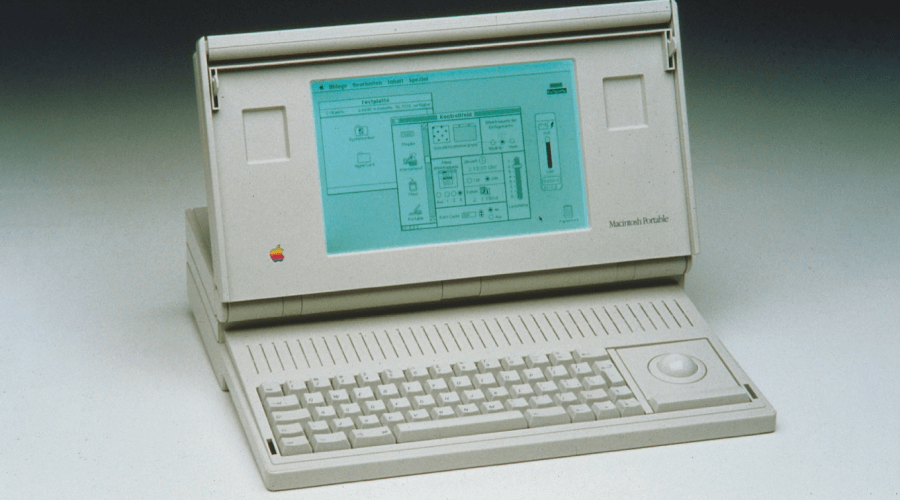
Macintosh Portable, which was introduced on September 20, 1989, was the first battery-powered Macintosh. The Portable was an early consumer laptop that utilised an active-matrix panel. In addition, it showcased a sleek, high-quality monochrome active-matrix LCD screen that was both fast and sharp. Its hinged design elegantly concealed the keyboard when not in use. This device was released to provide exceptional performance. However, it was discontinued in October of 1991 because of high prices and low sales.
Key Features of the Macintosh Portable:
Release Date: September 20, 1989
- It came with a detachable built-in trackball
- It featured three drive configurations
- It had a floppy drive of 1.44 MB
- Most Macintosh Portable devices came with a custom-engineered Conner CP-3045 (known by Apple as “Hard Disk 40SC”)
- It could hold 40 MB of data and consumed less power compared to its predecessors
- It had a proprietary SCSI connector
- It featured a built-in keyboard and monitor
- Macintosh Portable could run Macintosh System 6.0.4 through System 7.5.5
8. PowerBook 100
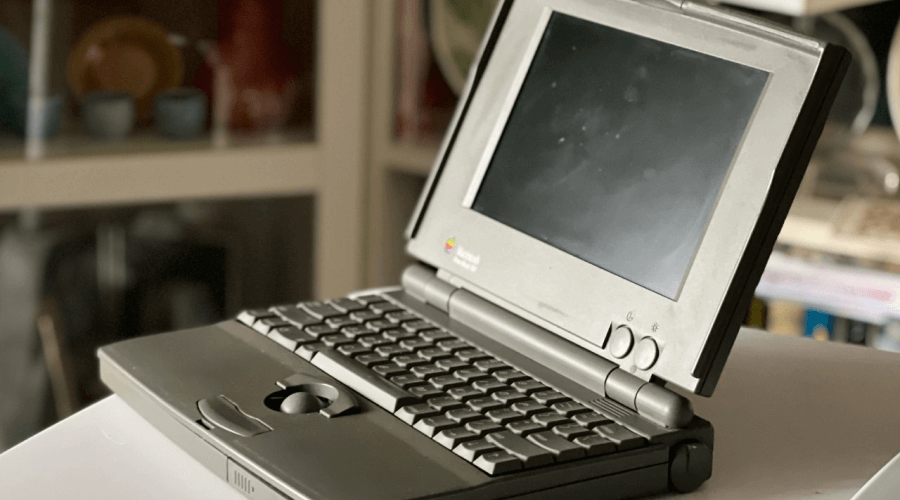
The PowerBook 100 was one of the most iconic laptop computers that Apple announced on October 18, 1991, and released at the COMDEX computer expo in Las Vegas, Nevada, on October 21, 1991. This inaugural model was created as an alternative to the stationary Macintosh computers. This portable personal computer was designed and manufactured by Sony for Apple Computer. This machine featured a compact size, lightweight, and long battery life, which were the most notable features of PowerBook 100. The PowerBook 100 was the first computer that solidified Apple’s position as a frontrunner in the realm of portable computing.
Key features of the PowerBook 100:
Release Date: October 18, 1991
- The PowerBook 100 was built with the Motorola 68000 processor at its core
- It boasted a 9.8-inch active-matrix LCD display, a 20 MB hard drive, and 2 MB of RAM
- It featured a trackball and a floppy disc drive
- The device featured a 2-8 MB of RAM, a 9-inch (23 cm) monochrome backlit liquid-crystal display with 640 × 400-pixel resolution, and the System 7.0.1 operating system.
9. iMac G3
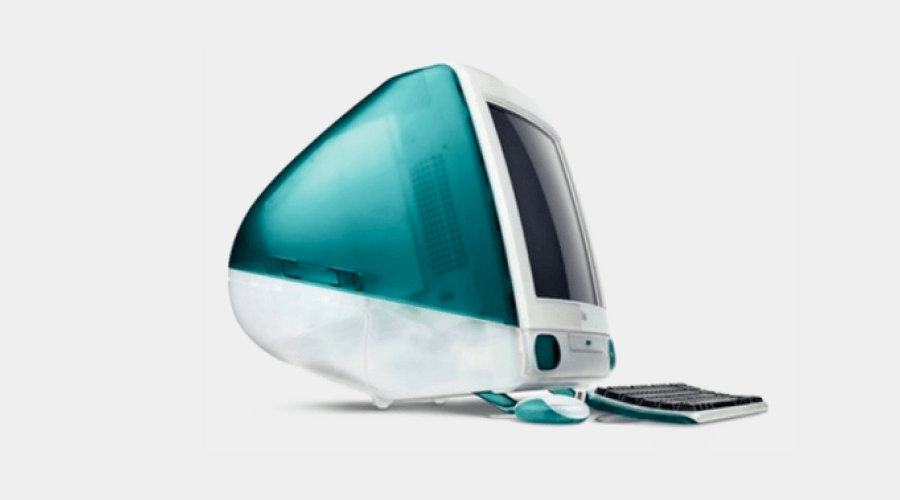
Launched on August 15, 1998, the iMac G3 was the very first iMac computer. iMac is a series of Macintosh computers which was pretty popular until 2003. This device received mixed responses from users. Some found it to be an excellent device, while others found its mouse and keyboard very uncomfortable.
Key Features of iMac G3:
Release Date: August 15, 1998
- iMac G3 featured a vibrant, see-through plastic casing
- It had a 15-inch CRT screen
- Came integrated with a CD-ROM drive and a convenient USB port
- It also included a keyboard and mouse that perfectly complemented its color
10. iBook G3

Just after the release of the iMac G3, Apple released the iBook G3 on January 5, 1999. This machine marked a significant shift in the design and usage of portable computers. The iBook G3 boasted impressive features. The device was impressively slim and lightweight. The iBook G3 was instrumental in solidifying Apple’s position as a frontrunner in the laptop industry. The most notable feature of this computer was its portability. This device was easy to carry anywhere.
Key Features of the iBook G3:
Release Date: January 5, 1999
- It featured a thickness of only 1.4 inches and a weight of just 4.9 pounds
- It included a convenient built-in handle for effortless portability
- It featured a one-of-a-kind translucent plastic casing
- The iBook G3 boasted a PowerPC G3 processor
- It boasted an impressive 32 MB of RAM and a 3.2 GB hard drive, offering ample storage capacity for users
11. Power Mac G5
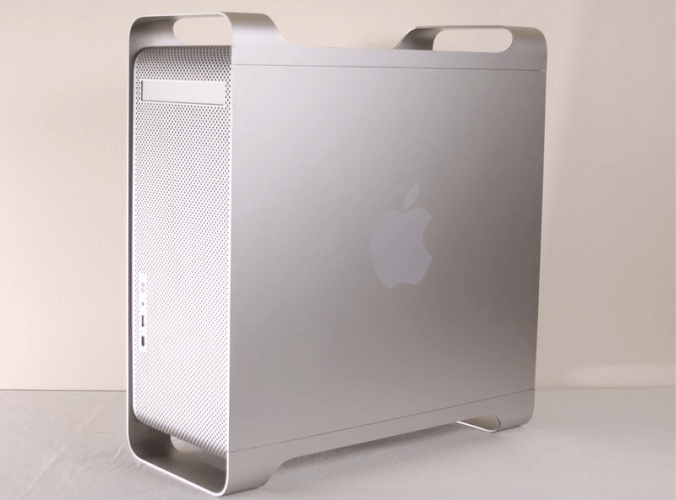
Power Mac G5 was launched by Apple in the year 2003 on June 28 at its Worldwide Developers Conference, known as WWDC. This Macintosh computer included a PowerPC 970 processor. Apple introduced two models of Power Mac G5: one with a 1.6 GHz PPC970 processor, and another with two 1.8 GHz PPC970 processors. Moreover, Apple introduced a 64-bit processor to its desktop lineup. In addition, the Power Mac G5 was the first Macintosh computer to incorporate a front-side bus with a clock speed of 1 GHz. It also showcased a fresh case design crafted from aluminum and glass.
Key Features of Power Mac G5:
Release Date: June 28, 2003
- It came equipped with a SuperDrive that had the capability to read and write CDs and DVDs.
- The Power Mac G5 included built-in support for Wi-Fi and Bluetooth.
- It had one FireWire 800 port and two FireWire 400 ports
- It included three USB 2.0 ports on one front panel) and 2 USB 1.1 ports on keyboard
- It came equipped with PC3200 DDR SDRAM; installed in pairs: 256MB, 512MB, 1GB, 2GB, 4GB, and 8GB
- It had hard drive of 80GB Serial ATA
- It featured NVIDIA GeForce 6800 Ultra DDL with 256MB GDDR3 SDRAM, 2 dual-link DVI ports
12. Mac Mini
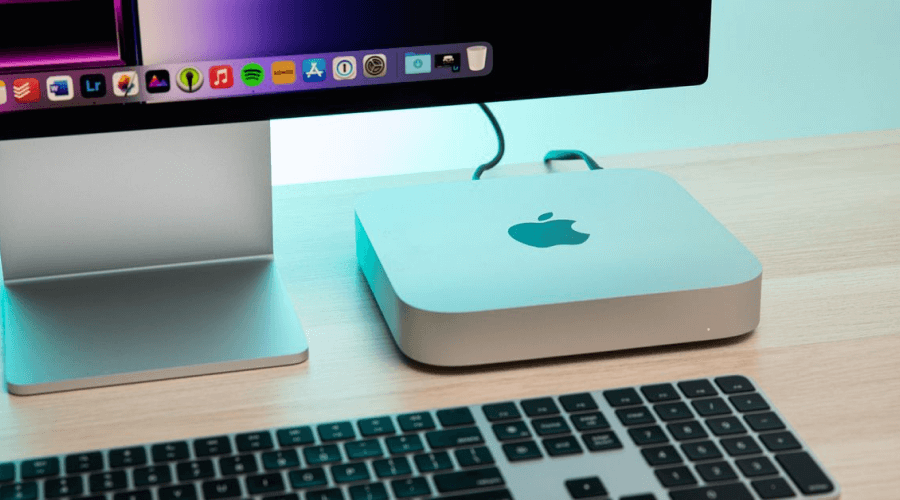
The Apple Mac Mini was launched on January 9, 2006, marking a significant milestone. The Mac Mini, as the name says, is a compact desktop computer designed specifically for professional users. This was the first ever computer without a display, keyboard, and mouse. The machine was originally marketed as “BYODKM” (Bring Your Own Display, Keyboard, and Mouse) in order to entice users to transition from Windows and Linux computers to Apple products. Apple Mac Mini was initially introduced in January 2005 with the PowerPC G4 CPU. However, the company unveiled a new model featuring the cutting-edge Intel Core Solo processor in 2006.
Key Features of Mac Mini:
Release Date: January 9, 2006
- Mac Mini model featured Thunderbolt connectivity and is equipped with an Intel Core i3, Core i5, or Core i7 CPU
- It featured a solid-state storage and replaces the majority of data ports with USB-C sockets
- It was powered by a G4 processor
- It came with a 40 or 80-GB hard disk drive
13. MacBook Pro
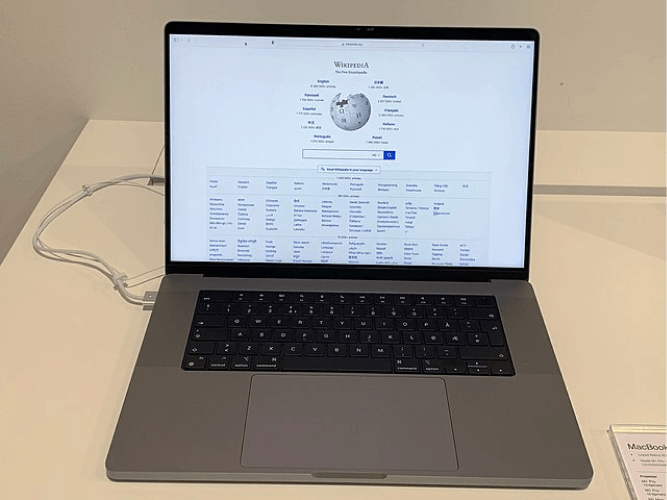
MacBook Pro was the first-ever MacBook Pro line that was launched in the year 2006 on August 6. In 2006, Apple, led by Steve Jobs, made a significant change in its computers. The brand switched from Motorola’s PowerPC architecture to Intel’s x86 processors. It was launched as an Intel-based replacement for the PowerBook line.
Key Features of MacBook Pro:
Release Date: August 6, 2006
- The initial MacBook Pro featured a sleek aluminium chassis reminiscent of the PowerBook G4
- It made the transition from PowerPC G4 chips to Intel Core processors
- It came equipped with a built-in webcam
- It featured the innovative MagSafe power connector
Also See: How To Do MacBook Troubleshooting With These Basic Tips
14. MacBook Air
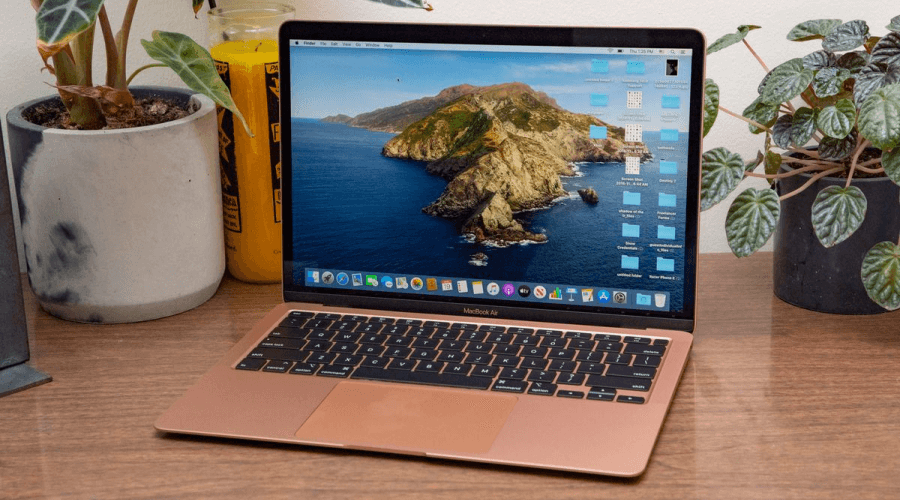
Here comes the next iconic Mac computer from Apple – the MacBook Air. It took the world of technology to the next level. Introduced on January 15, 2008, the MacBook Air is a groundbreaking Mac laptop. This device set a new standard for ultra-thin and lightweight design. The company promoted it as the world’s thinnest notebook.
Key Features of MacBook Air:
Release Date: January 15, 2008
- It featured a custom Intel Merom CPU and Intel GMA GPU, 40% smaller than the standard chip package
- MacBook Air featured a 13.3-inch LED-backlit display
- Also, it came equipped with a full-size keyboard, a multi-touch trackpad, and a solid-state drive
- Additionally, it included a MagSafe power connector and a convenient flip-down port hatch
- This device offered two Thunderbolt 3 ports, a USB-C port, and a 3.5mm headphone jack
- It came equipped with a range of Intel Core processors, including a 1.1GHz dual-core Intel Core i3 up to a 1.8GHz quad-core Intel Core i7
- Additionally, it offered a wide range of storage options, starting from 256GB and going up to 2TB
15. MacBook Air 13-inch
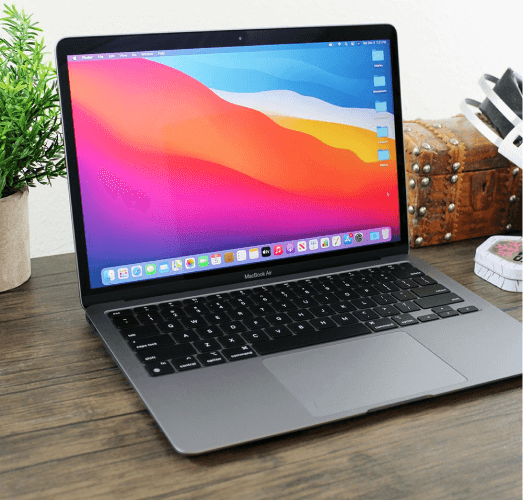
Apple launched MacBook Air 13-inch on October 20, 2010. The device was launched as a revised version of its previous models. This new MacBook Air featured a streamlined enclosure, a greater screen resolution, an upgraded battery, a second USB port, stereo speakers, and standard solid-state storage. Additionally, the new device had an enhanced battery, which grabbed users’ attention significantly.
Key Features of MacBook Air 13-inch:
Release Date: October 20, 2010
- The device featured a stunning design, great battery life and a brilliant user interface
- 1.86GHz Intel Core 2 Duo processor with 6MB on-chip shared L2 cache; or optional 2.13GHz Intel Core 2 Duo processor with 6MB shared L2 cache
- It boasted a Highly recyclable aluminum enclosure
- 13.3-inch screen
- high-resolution LED-backlit glossy widescreen display
- Offered support for millions of colours
- It featured a multi-touch trackpad for precise cursor control
- It boasted a Full-size keyboard
- It had 2GB of 1066MHz DDR3 SDRAM onboard (4GB maximum) and 256GB of flash storage
16. MacBook Pro with Retina Display
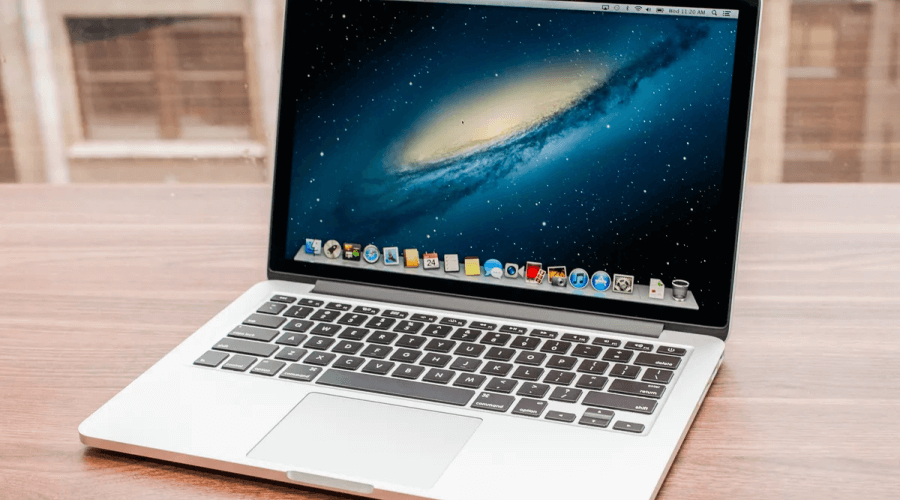
The MacBook Pro was the first-ever Macintosh computer with a high-resolution Retina display. It was introduced on June 11, 2012. The brand released a 15-inch model in June and a 13-inch model in October of the same year. The new MacBook Pro was thinner than its previous model. Also, it came with solid-state storage (SSD) as the standard option. It also incorporated HDMI connectivity and a high-resolution Retina display. It was without Ethernet, FireWire ports, and the optical drive.
Key Features of MacBook Pro:
Release Date: June 11, 2012
- The laptop featured a 15.4-inch display boasting a high-resolution of 2880 x 1800 pixels.
- The device was powered by a quad-core Intel Core i7 processor
- It offered a maximum of 16 GB of RAM and 768 GB of flash storage
- The device featured a sleek and lightweight design
- It came along with an HDMI port and two Thunderbolt ports
17. Mac Pro (2013)
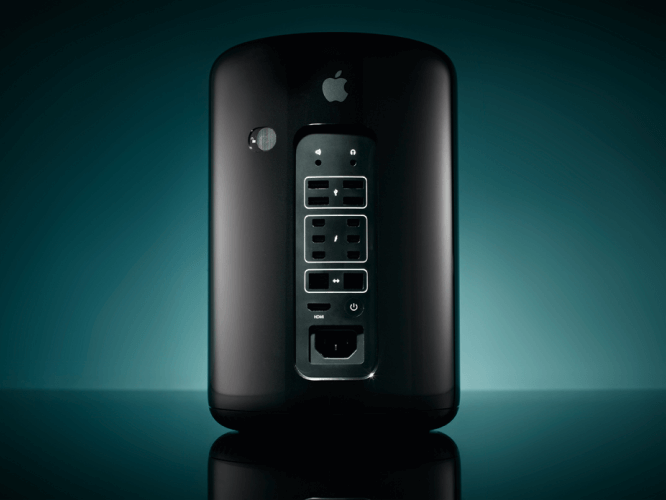
The Mac Pro was launched on June 10, 2013, and released on December 19, 2013. It was the first Mac Pro to feature a unique cylindrical design. The Mac Pro (2013) is a high-performance desktop computer that was released as an upgrade to the previous Mac Pro model in 2010. Apple promoted this computer as the second-generation computer that offered significantly improved performance and took up much less space compared to the first generation.
Key Features of Mac Pro (2013):
Release Date: June 10, 2013
- The device featured a sleek aluminium case measuring 9.9 inches in height and 6.6 inches in width
- It boasted a powerful 12-core Intel Xeon E5 processor
- It boasted a maximum of 64 GB of RAM and up to 1 TB of flash storage. The device also included six Thunderbolt 2 ports, four USB 3.0 ports, an HDMI port, and two Gigabit Ethernet ports
18. MacBook 12”
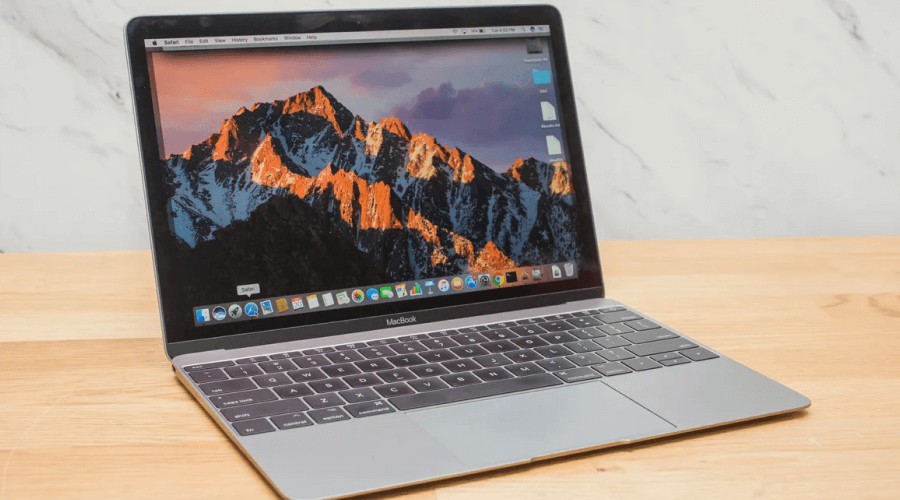
Apple MacBook 12” inches was introduced on October 27, 2015. This game-changing tablet significantly impacted users’ lives. This laptop by Apple is incredibly thin and lightweight, weighing only 2 pounds and measuring 11 x 7.7 x 0.14 to 0.52 inches. In addition, it comes with a completely innovative keyboard and touchpad design to maximize functionality within an impressively lightweight 2-pound frame. It also houses two microphones, a headphone jack and a single USB-C port. However, it lacks a standard USB 3.0 port, SD card slot, or any other port.
Key Features of MacBook 12″:
Release Date: October 27, 2015
- It includes the MagSafe connection for power
- It features USB-C connectivity
- Also, it has video output
- It also has a 12-inch Retina display
- This machine comes packed with an IPS panel with ultrawide viewing angles.
- It includes the all-new keyboard and a larger 4.4 x 2.8-inch touchpad for improved performance
- It has a 480p FaceTime camera with 848 x 480 pixels of resolution
- It offers Core i5 processors and a 1.1-GHz Core M CPU for fan-less design
19. iMac Pro
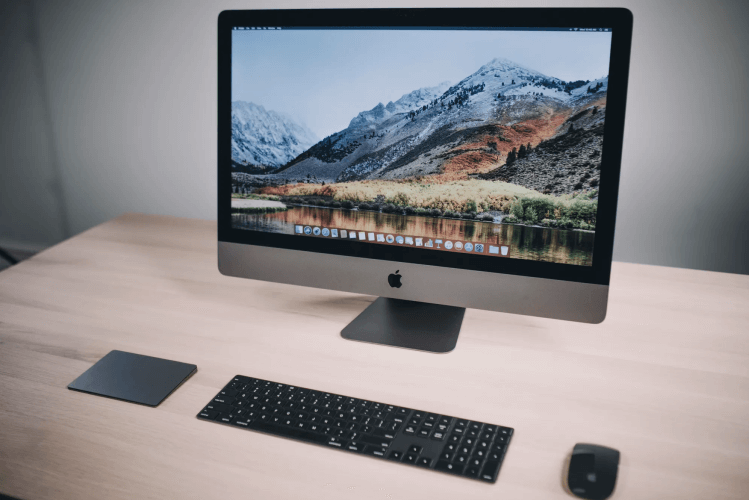
Apple reached a significant milestone in 2017 with its newest-ever device, the iMac Pro. The iMac Pro, unveiled on June 5, 2017, is the first iMac that was designed to offer professional-grade performance. Apple made an announcement about the iMac Pro on June 5, 2017, and released it on December 14, 2017. This high-end device was designed specifically for professionals. This all-in-one desktop computer offered impressive performance.
Key Features of iMac Pro:
Release Date: June 5, 2017
- The device boasted a 27-inch Retina 5K display
- It has an 18-core Intel Xeon W processor
- It boasts a maximum of 128 GB of RAM
- It features an Intel Xeon processor, up to 16GB of RAM, and up to 4TB of SSD storage
- The device features a sleek space grey color scheme
- It also has a high-quality 1080p FaceTime HD camera, four Thunderbolt 3 ports, and a speedy 10 Gigabit Ethernet port
- Also, it includes a 10Gb Ethernet port, four Thunderbolt 3 ports, and a 3.5mm headphone jack
20. MacBook Air with M1 Chip
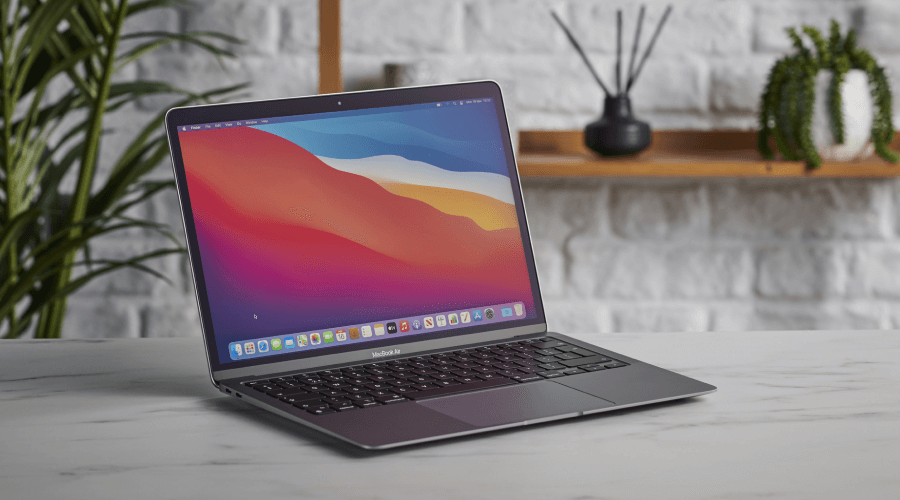
Apple unveiled MacBook Air on November 17, 2020. This newest Apple Mac Computer featured Apple’s own M1 chip. It garnered immense popularity due to its portable size. Indeed, the MacBook Air with M1 is a highly portable device. It features impressive speed and agility, complemented by a sleek, fan-less design. Also, it incorporates a stunning Retina display. Also, it boasts an impressive battery life.
Key Features of MacBook Air with M1:
Release Date: November 17, 2020
- MacBook Air with M1 featured a 13.3-inch Retina display
- It incorporated a powerful 8-core CPU and GPU, a maximum of 16 GB of RAM
- It featured a generous storage capacity of up to 2 TB of flash storage
- It boasted a fan-less design, a Touch ID sensor, two USB-C ports, and an impressive battery life of up to 18 hours
21. MacBook Air with M2 Chip
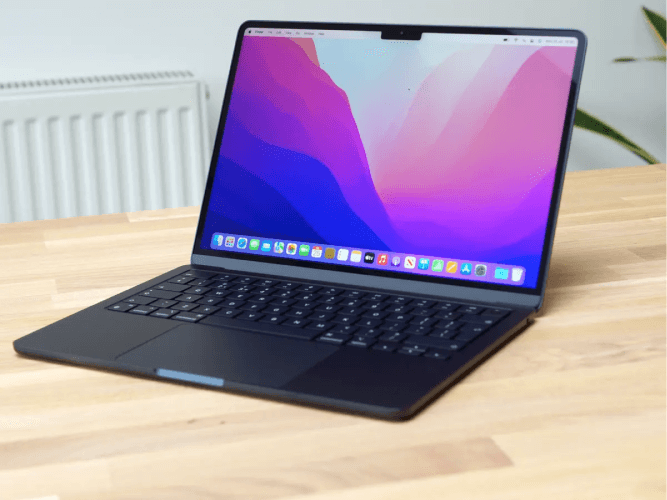
Apple launched its first-ever MacBook Air with M2 chip on October 10, 2022. The new computer featured a new design, a new display, and a new processor. In addition to the design and hardware changes, the new MacBook Air has Apple’s latest in-house processor, the M2. It is remarkably sleek. The sleek and beautiful design of the computer makes it easy to carry. And the M2 chip makes the device speedier than ever. The device was designed for professional users. It makes editing a video, creating documents, etc., a breeze.
Key Features of MacBook Air with M2 Chip:
Release Date: October 10, 2022
- It boasts a liquid Retina display
- It offers support for 1 billion colours
- It has an 8-core CPU with four performance cores, a 16-core Neural Engine, and 100GB/s memory bandwidth
- It boasts 8GB of unified memory configurable to 16GB or 24GB
- It offers impressive battery life
- It comes with 256GB SSD configurable to 512GB, 1TB or 2TB
- It features a backlit magic keyboard and touchpad
- The device incorporates Wi-Fi 6 (802.11ax) and Bluetooth 5.3
Wrapping up…
So, this is all about the Macintosh journey so far. Apple’s Mac is one of the most adored computers to date. It became one of the most beloved personal computer brands globally since its inception. The brand is known for offering distinct features, including a user-friendly interface, aesthetically appealing designs, and robust software capabilities.
At present, Apple is working on the launch of Vision Pro, a potential game-changer in the world of computing.
Let’s wait for more impressive devices from Apple! With this, we would like to take a moment to congratulate Apple for its significant milestone and wish the brand an incredible journey ahead.
Thanks for reading!
Stay tuned for more such insightful articles in the future!


